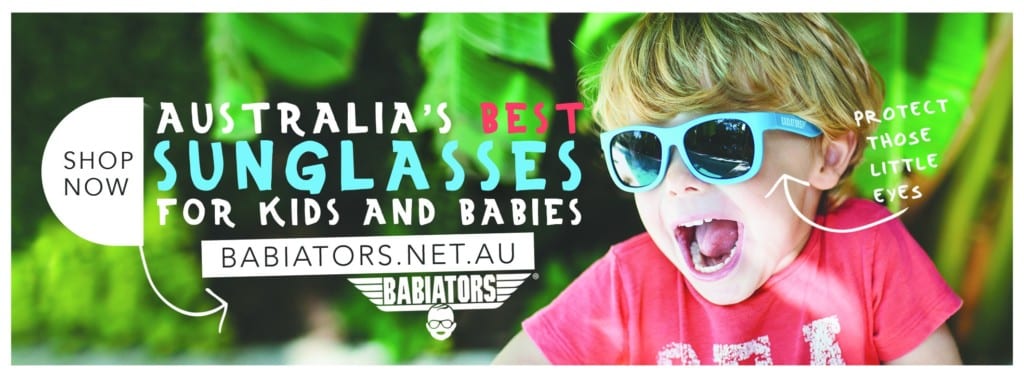Living in South East Queensland, we have some special challenges when it comes to eye health. All members of the family need to keep their eyes healthy to safeguard their future vision.
Should kids in South East Queensland be wearing sunglasses year-round?
Actually, yes! The UV rating is very high in South East Queensland all year round, and you can’t always judge it by the level of glare – check the Bureau of Meteorology website to be sure. If kids are too young to get sunglasses to fit well and stay on, they should at least be wearing a hat.
How do you choose a good pair of sunnies?
Great sunnies are available from the Cancer Council and other reputable retailers, but all sunglasses sold in Australia must have their UV protection category marked. Category 1 doesn’t provide much protection, they’re more like fashion sunglasses, but Categories 2 and 3 are adequate, with Category 4 being the best.
Wrap-around sunglasses are good for shielding your eyes from the sides as well as the front, but polarised lenses are not any better at protecting you from UV – they just reduce the glare. The same applies to darker tints – they reduce glare, but don’t necessarily mean a better level of protection from the sun. You just might squint less and avoid wrinkles!

At what age should you first get your children’s eye tested?
QUT Health starts screening kids from the age of six months – some misalignments of the eyes can start that young, or if they have very poor eyesight they can pick it up and correct it at that age.
Kids should definitely have eye tests before starting prep. Optometry Queensland-Northern Territory has just released a program called Smart Eye Start, which lets schools know to advise parents that kids should have eye tests before they start school.
It’s important to pick things up before they become a problem. Most issues will be picked up when a child starts to learn to read and write and is struggling – but if you can pick it up before then, you can potentially prevent issues. Also, if your kids do have difficulties, you’ve already ruled out vision as a possible cause.
Kids should have eye tests /regular check-ups every 2 years, because in that time they can develop vision problems without realising that there’s been a significant change
What would I notice if my child has a vision problem?
Kids will often assume that what they’re seeing is normal, so they won’t necessarily say “I can’t see, that’s blurry”. They might hold things close to try to read, or they may rub their eyes a lot. Skipping lines or words, and losing their place while reading might indicate a problem with eye tracking or eye muscles.
If they have distance vision issues you might notice them squinting when watching TV, or that they can’t copy off the board quickly or need to sit up the front to read the writing on the board. However younger kids are actually more likely to have near-vision problems. Short-sightedness is more common in older kids, more often it will show up at age 8-10 or older.

If they have distance vision issues you might notice them squinting when watching TV, or that they can’t copy off the board quickly or need to sit up the front to read the writing on the board. However younger kids are more likely to have near-vision problems. Short-sightedness is more common in older kids, more often it will show up at age 8-10 or older.
Does too much screen time hurt your eyes?
It can certainly give you a painful headache from eye strain! If kids are reading or using screens, encourage them to take regular breaks – and set a good example for them too. Don’t be on the computer for more than 2 hours at a time if you can help it, and take a break for at least 20 seconds every 20 minutes. It doesn’t have to be a huge break, just enough to rest your eyes and look at a distant object to relax your focus.
The long-term issue is the risk of progressive short-sightedness with the amount of screen time. Spending at least 60 minutes outdoors every day can reduce your child’s risk of short-sightedness.
What should I ask for when getting an eye test?
Be wary if the appointment is too short. A comprehensive eye test involves not only assessment of your glasses prescription, but also looks at your eye focusing, and screens for a number of eye conditions ranging from dry eye to macular degeneration and glaucoma.
Check if your optometrist has bulk billing and if they charge for additional testing. Some private practices may bulk bill for certain age groups and concession card holders. QUT also has a student-led Optometry Clinic which provides eye examination at no cost with access to the latest equipment. Optometry students are fully supervised by experienced clinicians. For patients who need specialised or regular testing, or for patients without a Medicare card, this can allow them to get the care they need at minimal or no cost.
by Rebecca Cox, Supervising Clinician, QUT Health Clinics – Optometry.
This article was published in Issue 21 of our print magazine, April/May 2017.

